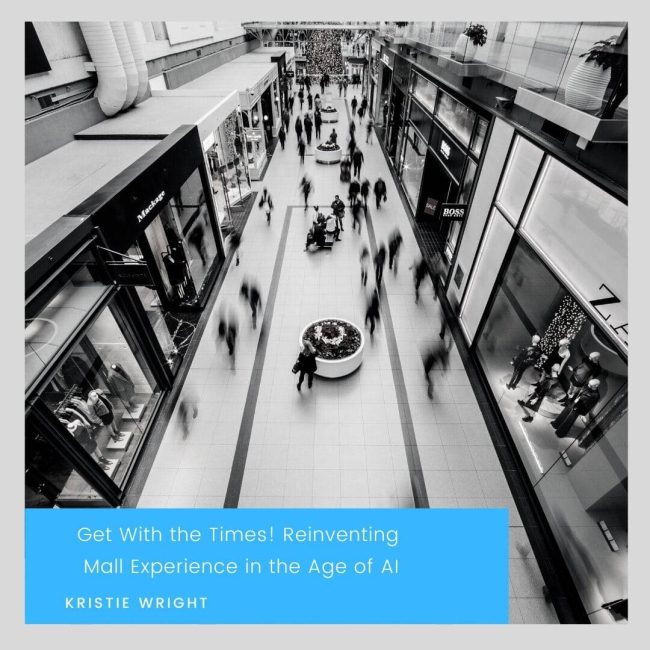As we move further into the digital age, shopping malls are no longer just places to buy products – they have become experience-driven destinations. In 2025, the future of shopping malls is being shaped by three major factors: creating memorable customer experiences, integrating sustainable practices, and using data to optimize operations and improve decision-making. Let’s explore how these elements are revolutionizing the mall industry and what the future holds for these spaces.
1. The Power of Experience: Creating Destination Spaces
Gone are the days when malls were simply about retail transactions. Today, the best shopping centers are creating immersive experiences that encourage visitors to spend more time on-site, engage with brands, and enjoy their time in a vibrant environment.
The key to success is personalization. With the help of advanced video analytics and customer behavior data, malls can offer tailor-made experiences. This could include offering personalized discounts, adjusting store layouts based on customer preferences, or even creating interactive digital installations that invite visitors to engage with the brand in new and exciting ways.
Key Trends in Experience:
Interactive Displays and Smart Spaces: Malls are integrating digital signage and interactive kiosks to create a more dynamic shopping experience.
Events and Social Spaces: Pop-up events, art installations, live music, and cafes are becoming essential parts of the mall experience.
Personalization at Scale: Data-driven insights are being used to create personalized offers, product recommendations, and exclusive events for loyal customers.
2. Sustainability: Greener Malls for a Better Future
As the world continues to tackle climate change, sustainability has become a top priority across industries – and shopping malls are no exception. The future of malls will see a shift towards greener, more eco-friendly practices that not only reduce environmental impact but also enhance the customer experience.
Sustainable malls are incorporating renewable energy sources, reducing waste through recycling programs, and using energy-efficient lighting and heating. Some malls are even implementing green roofs or sustainable building materials to reduce their carbon footprint.
Moreover, the integration of sustainability is something shoppers increasingly care about. Consumers are more aware of the environmental impact of their purchases, and they want to shop at places that align with their values.
Key Trends in Sustainability:
Energy Efficiency: Malls are embracing smart building technologies to optimize energy use, reduce waste, and lower emissions.
Sustainable Design and Materials: Green architecture and the use of recycled or sustainable materials are becoming standard.
Eco-Friendly Shopping Options: Some malls are offering electric car charging stations, promoting sustainable fashion brands, and providing waste-free dining options.
3. Data: The Backbone of Decision-Making and Optimization
Data is at the heart of everything in the future of shopping malls. With the rise of technologies like AI-powered video analytics, mall managers are now able to gain deep insights into customer behavior, store performance, and foot traffic patterns.
By tracking how visitors move through the mall, how long they spend in specific areas, and where they tend to linger, malls can make informed decisions on everything from marketing campaigns to space allocation and tenant selection. This real-time data not only enhances the customer experience but also allows for better operational efficiency.
Key Trends in Data Analytics:
Foot Traffic Analysis: Understanding how customers flow through the mall helps optimize store layouts, tenant placement, and marketing efforts.
Predictive Analytics for Sales and Inventory: Data-driven insights can help predict customer demand and optimize stock levels for maximum profitability.
Customer Journey Mapping: Video analytics allows malls to track and understand the customer journey, from entry to exit, enabling better targeting of promotions and services.
Conclusion: Embracing the Future with Experience, Sustainability, and Data
The future of shopping malls is bright, dynamic, and driven by experience, sustainability, and data. By embracing these three key pillars, malls can remain relevant in an increasingly digital world and continue to offer visitors more than just a place to shop – but a destination for experiences, innovation, and responsible consumption.
As the role of malls continues to evolve, the integration of advanced technologies and sustainable practices will be the differentiators that allow shopping centers to thrive in 2025 and beyond.
Are you ready to transform your mall with cutting-edge technology and data-driven insights? At Flame Analytics, we provide the tools to help malls understand customer behavior, optimize their spaces, and enhance sustainability efforts. Let’s build the mall of tomorrow, today!







